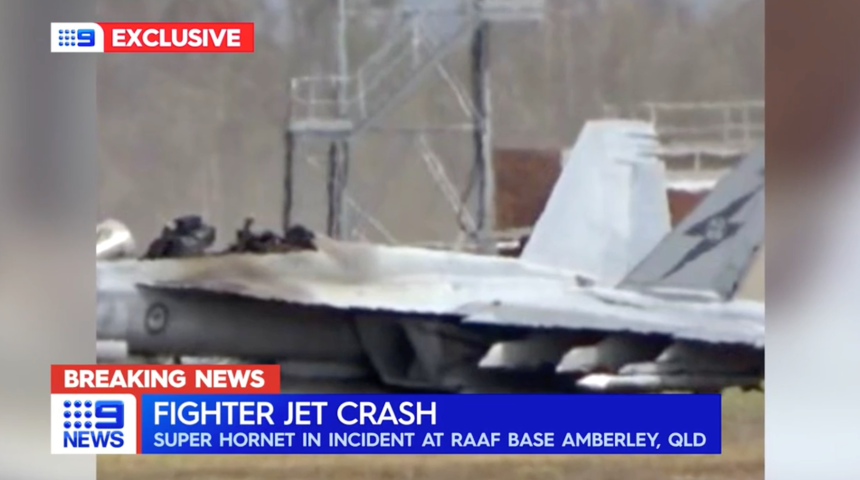The Royal Australian Air Force F/A-18F veered off runway after the two pilots successfully ejected.
A RAAF F/A-18F Super Hornet belonging to No. 1 Squadron was involved in an incident at RAAF Base Amberely, Queensland, Australia, on Dec. 8, 2020.
The aircraft was taking off along with seven other aircraft when it suffered what some local media have reported as an engine failure. As a consequence, the aircrew ejected while the aircraft ran off the runway where it came to a halt. Images taken by bystanders and published by Australian media outlets show the Super Hornet with a collapsed nose gear in the grass beside the tarmac.
Two pilots have been forced to eject after a major incident at a RAAF base in Queensland. #7NEWS https://t.co/6CVU5MyJBL
— 7NEWS Sydney (@7NewsSydney) December 8, 2020
Both pilots are safe according to official sources and, needless to say, the cause of the incident will be investigated.
The RAAF operates both the F/A-18F Super Hornet and EA-18G Growler jets. 24 Super Hornets are assigned to the No. 1 Squadron that has received the new aircraft between March 2010 and December 2010, when the unit declared IOC (Initial Operational Capability) with the type. In 2014, 6x RAAF Super Hornets deployed to Al Minhad airbase, in the UAE, as part of “Operation OKRA”, the Australian contribution to the US-led coalition that is conducting air strikes against ISIS targets in Iraq.
The RAAF also procured 12 EA-18G Growlers. Production of the first RAAF Electronic Attack variant of the Super Hornet began in 2015 and the first aircraft was delivered in 2017 to the 6 Squadron.
One of these, the airframe serialled A46-311, part a contingent of four RAAF No. 6 Squadron’s EA-18G Growlers attending Red Flag 18-1 air combat exercise, suffered an uncontained engine failure on take off on Jan. 28, 2018. In that case, the two crew members remained aboard the aircraft until it came to a rest and exited the jet before it was engulfed in flames.
According to the RAAF investigation, one of the aircraft’s General Electric F414 turbofan engines broke into three major pieces with one segment piercing through the airframe, another one going through the second engine and a third one destroying the right hand side tail. The incident did cost the RAAF some 125M USD according to most reports.
Immediately after the investigation report was released, the Australian Defense Department tried to claim compensation. However, the request was rejected in the very early stages.









